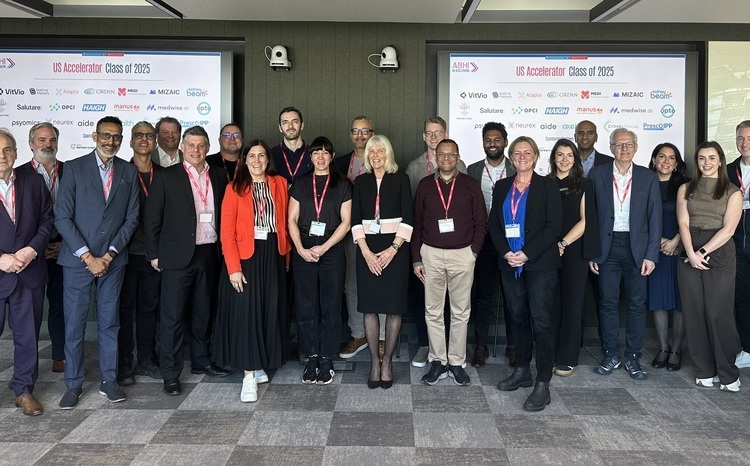Digital Health at CES 2017, Las Vegas
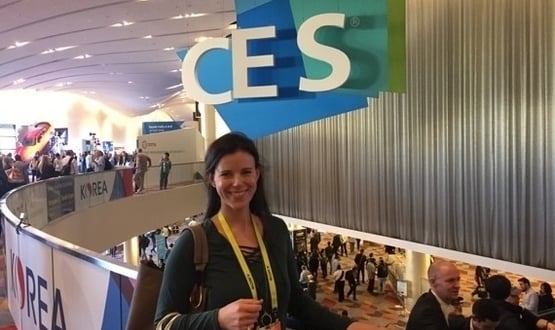
If you are into the very latest consumer technology and gadgets, then CES is the big one. The 2017 show boasted more than 177,000 attendees and nearly 4,000 exhibitors. And once again technologies, apps and sensors to support health and fitness were a key trend.
Digital health technologies have grown dramatically at CES as wearables and smart health technologies have taken centre stage in the consumer market. Digital Health News combed through the crowds to find what’s trending in digital health and which companies are leading in their field.
From a quick glance digital health companies from the US, France and not surprisingly Asia (Korea, Singapore and China) dominate the floor.
Digital Health looks at the top trends from CES 2017:
1.Sleep tech: this year’s hot digital health technology
One of the most notable trends of CES 2017 is that wellness devices and apps are going beyond the fitness fanatics and worried well to the mass market in the form of sleep and stress reduction tools.
During a session put on by the Digital Health Summit, celebrity doctor Mehmet Oz, M.D. announcing findings of the largest consumer sleep study ever conducted, said “Not having sleep is a lethal problem which can lead to heart failure”.

Photo: Dr Mehmet Oz at panel discussion at CES Digital Health Summit/Lindsey Birnsteel
The answer, says Dr Oz is ‘sleep metrics’, with the average American sleep score just 77/100 – a number he categorises as poor. He says it is not just about monitoring the body from the inside but looking at environmental factors as well.
One company that is spearheading the sleep tech industry is Sleep Number which debuted its new smart bed, Sleep Number 360, at CES. The smart bed assesses user's sleep patterns throughout the night and responds by changing position, warming the foot of the bed and waking up the user in the morning. The bed uses its SleepIQ technology and connects with the user through the SleepIQ app.
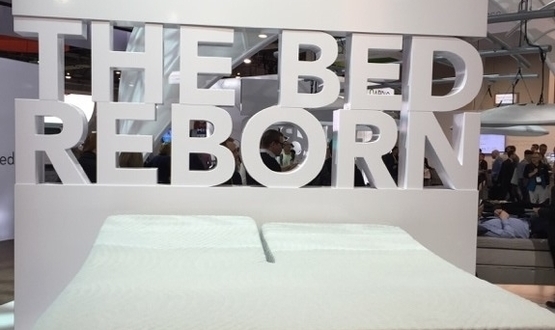
Photo: SleepNumber360/Lindsey Birnsteel
Emfit QS, a Finish company, has created another smart bed that relies on ballistocardiography, a technique for sensing the sudden ejection of blood into the great vessels with each heartbeat, and breathing movement analysis. Emfit QS tracks your sleep and measures your heart and respiration rate through contact-free sensors.
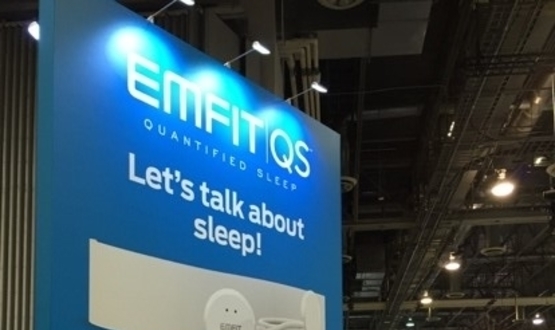
Photo: emFITQS/Lindsey Birnsteel
Ospicon Systems, headquartered in Singapore, differentiates itself from other sleep tech competitors by measuring a person’s breathing though fiberoptics rather than a motion or pressure sensor. The product, which was a CES 2017 Innovation Awards Honouree has two lines – one for adults (SafetoSleep) and the other for infants (STS200 Baby Sleep Wellness).
![]()
Photo: Ospicon Baby Sleep Wellness/Lindsey Birnsteel
2.Genomics pushes digital health to the limits
2016 saw a record amount of funding in US digital health start-ups focused on genomics and gene sequencing and CES reflected this trend, with a flurry of companies demonstrating consumer-focused genomics technologies and tools
The world’s first genome-based shared economy platform was officially launched at this year’s CES. South Korea-based MyGenomeBox has put to market a smart DNA ecosystem based on a secure cloud platform with genome data and related DNA apps. MGB offers cloud storage for your DNA information, an APP box where you can discover apps related to your DNA information as well as a means to create and develop your own DNA apps and social media platform.
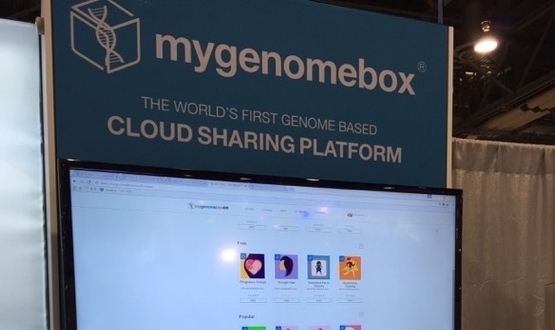
Photo:MyGenomeBox/Lindsey Birnsteel
3.Robotics are driving advancements in rehabilitation care
Robotics are never a surprise at CES, but this year Digital Health saw robotics taking the lead in the rehabilitation sector.
Neofect’s Rapael smart rehabilitation solution was a winner of this year’s CES Innovation Awards. The smart glove is designed to induce neuroplasticity for hand function of patients with neurological brain injuries, such as stroke. The glove provides real-time biofeedback and offers game-like exercises and data visualisation.
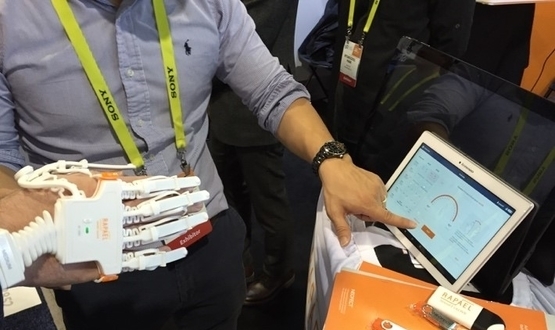
Photo: Neofect Rapael/Lindsey Birnsteel
Gyenno Technologies’ chronic disease management solution is designed for patients with Parkinson’s disease and dyskinesia. The Gyenno Spoon (and fork) has the claimed capability to realise all-dimensional stabilisation based on intelligent rehab robotics.
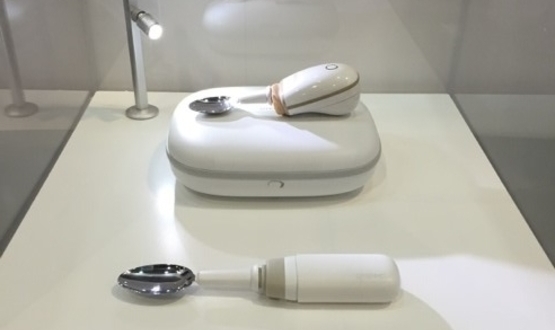
Photo: Gyenno Spoon/Lindsey Birnsteel
There is also a software application layer that collects data through powered exoskeletons, providing a closed-loop telemedicine system for gait analysis.
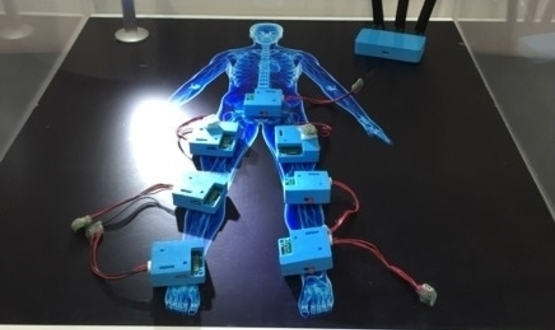
Photo: Gyenno gait/Lindsey Birnsteel
CES 2017 was also saw the announcement of a partnership between VisioMed Group, a French medical electronics specialist company, and Robotopi in the launch of “Pepper”, a next-generation life assistant to help caregivers collect health data in hospitals, rehab centres and retirement homes.
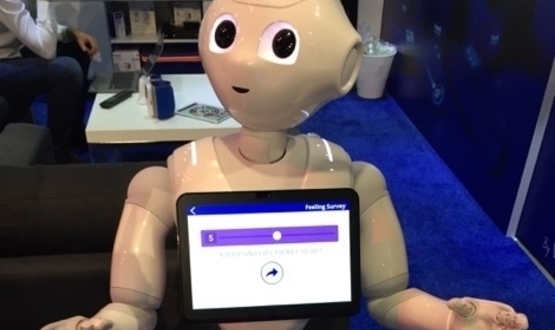
Photo: Pepper/Lindsey Birnsteel
4.Connected IoT is disrupting healthcare
The Internet of Things (IoT) is taking the health and wellness sector by storm. CES 2017 saw an explosion of wellness platforms and ecosystems with the potential to scale.
VisioMed’s BeWellConnect offers the largest range of connected medical devices worldwide. The French company also offers homecare solutions and debuted the world’s first mobile telemedicine station at CES this year called VisioCheck.
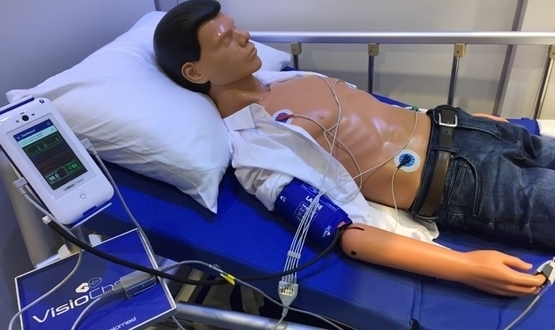
Photo: VisioCheck/Lindsey Birnsteel
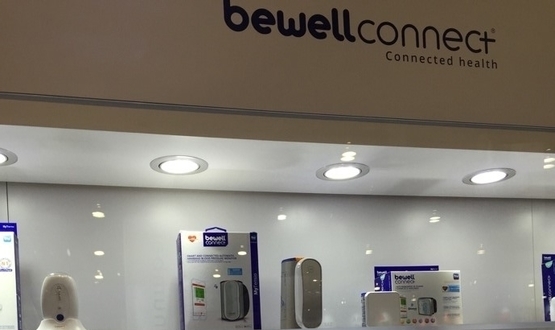
Photo: bewell connected health suite/Lindsey Birnsteel
French-based Terraillon and iHealth, a Silicon Valley brainchild, offered one of the most comprehensive smart health ecosystems at CES 2017.
Terraillon, a European leader in the wellness market, showcased its complete wellness line and launched their latest smart health product, the Homni smart sleep solution. Yet another long standing health device brand getting into the sleep tech market.
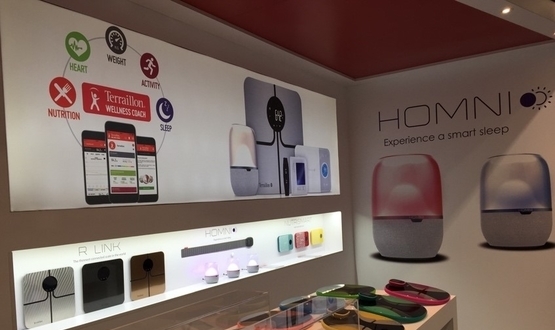
Photo: Terraillon/Lindsey Birnsteel
Through the iHealth Next platform medical professionals can monitor a comprehensive set of vitals through glucometers, blood pressure monitors and fitness devices.
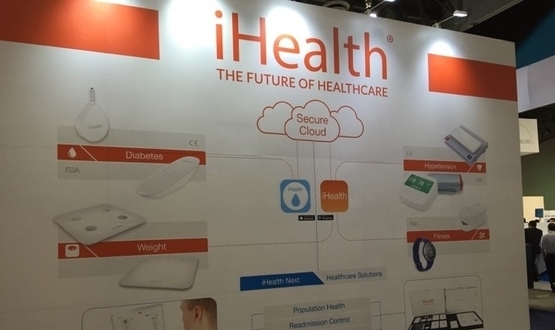
Photo: iHealth/Lindsey Birnsteel
Like Terraillon and iHealth, several other connected health-devices companies have built their product suite on a platform creating an opportunity for scalability and expansion into other market verticals. These include ANT, Sakura, KimAscend and Transtek.
Philips also showcased an impressive range of connected digital health products and services in its secure HealthSuite cloud platform, particularly its trendy sleep and baby tech products.
5. Digital health gets under the skin
Of course Digital Health News couldn’t leave CES without sharing some ‘gee whiz’ moments from the show. Wearables are becoming fashionable with Under Armour and Xenoma, CES Innovation Award Honouree, showcasing smart apparel technology. Xenoma’s e-skin offers a motion tracking experience from virtual reality games to personal fitness and healthcare.
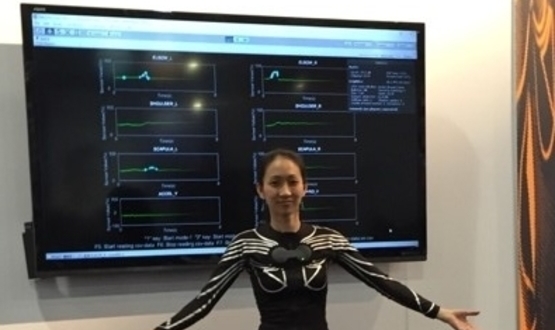
Photo: Xenoma e-skin/Lindsey Birnsteel
Xenoma is the first company to develop printed circuit fabric. Its technological platform can be applied not only to closed applications but also to applications in preventative medical treatment using big data.
6.Digital Health really motoring in 2017
Collaborations in digital health and the auto industry also got CES attendees excited when Mercedes Benz and Philips announced its Fit & Healthy project that includes a steering wheel that monitors your heart rate and sensored seats that respond to driver’s fatigue levels.
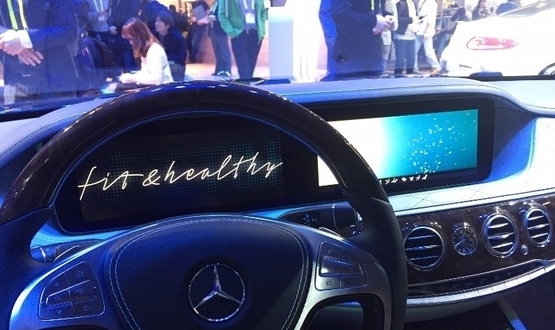
Photo: Mercedes Fit & Health/Lindsey Birnsteel
Hyundai debuted its Health + Mobility Cockpit that manages occupant’s stress and responds to variations in mood through bursts of aromatherapy.
From genomics to robots to expansive health ecosystems and smart apparel CES 2017 proved to be yet another year of exciting innovation.


